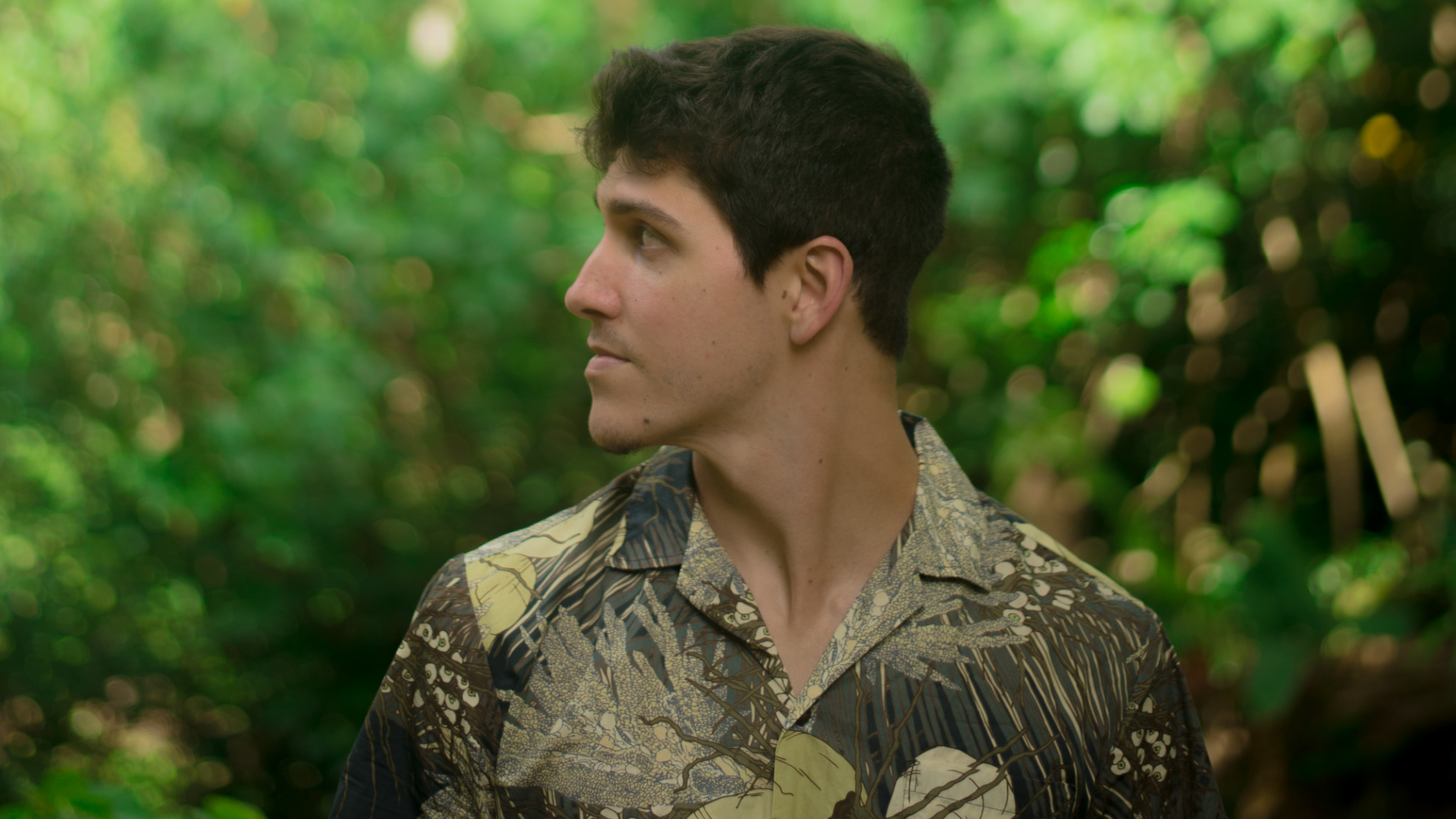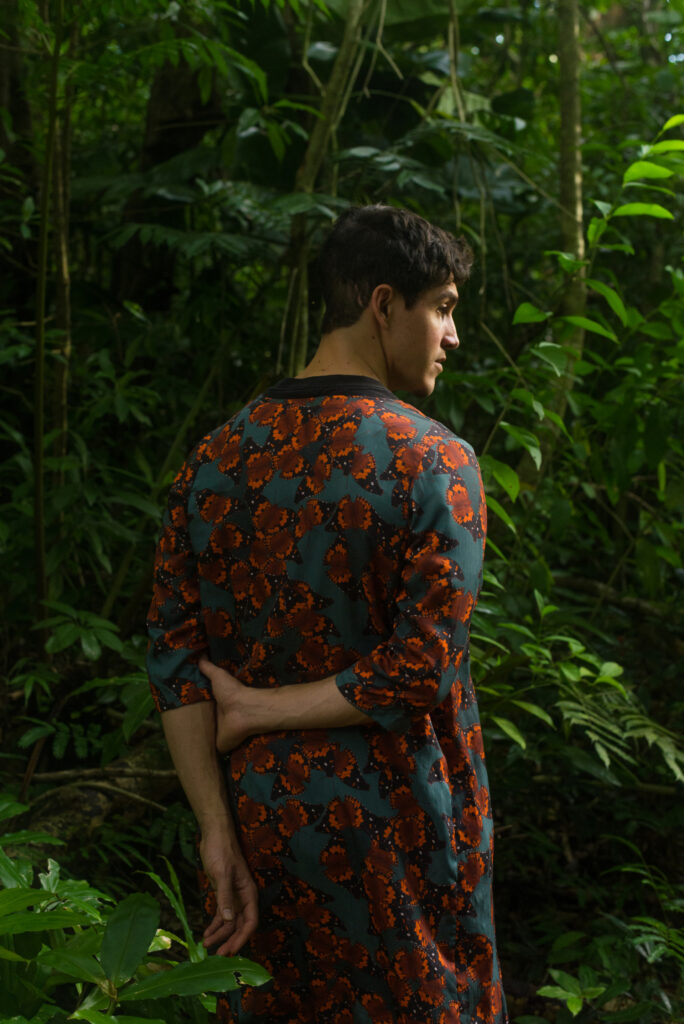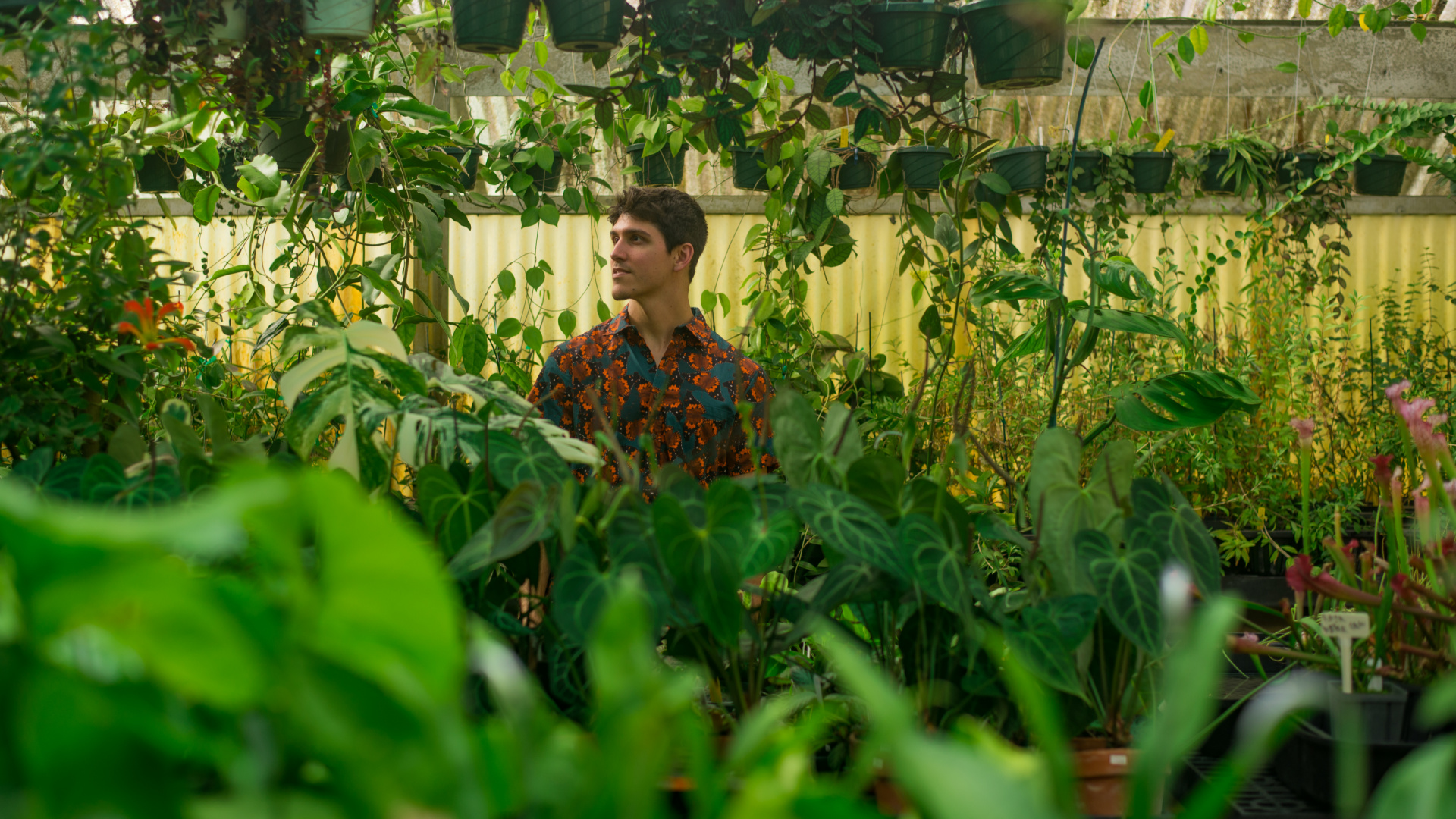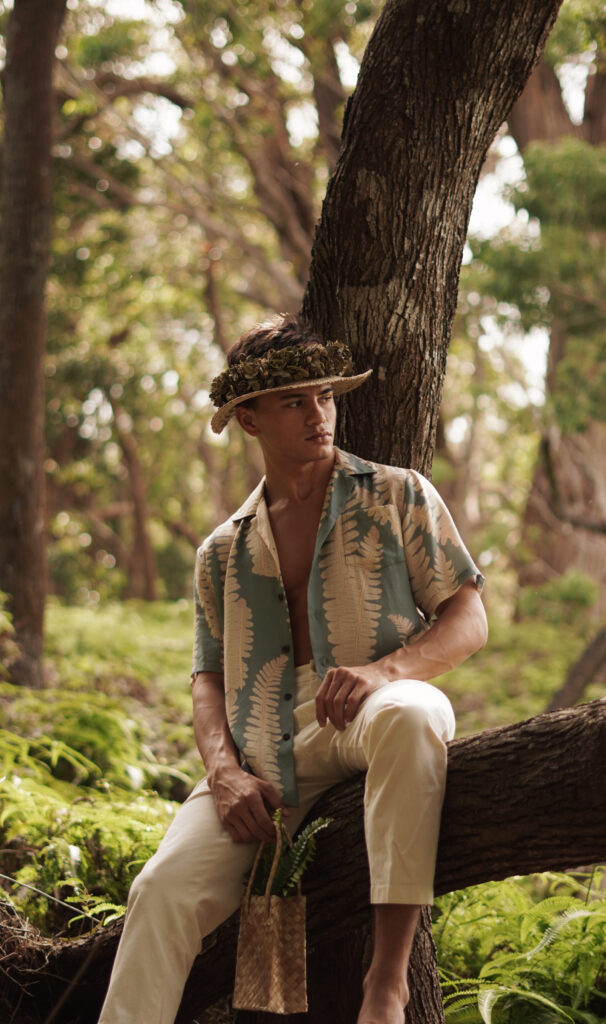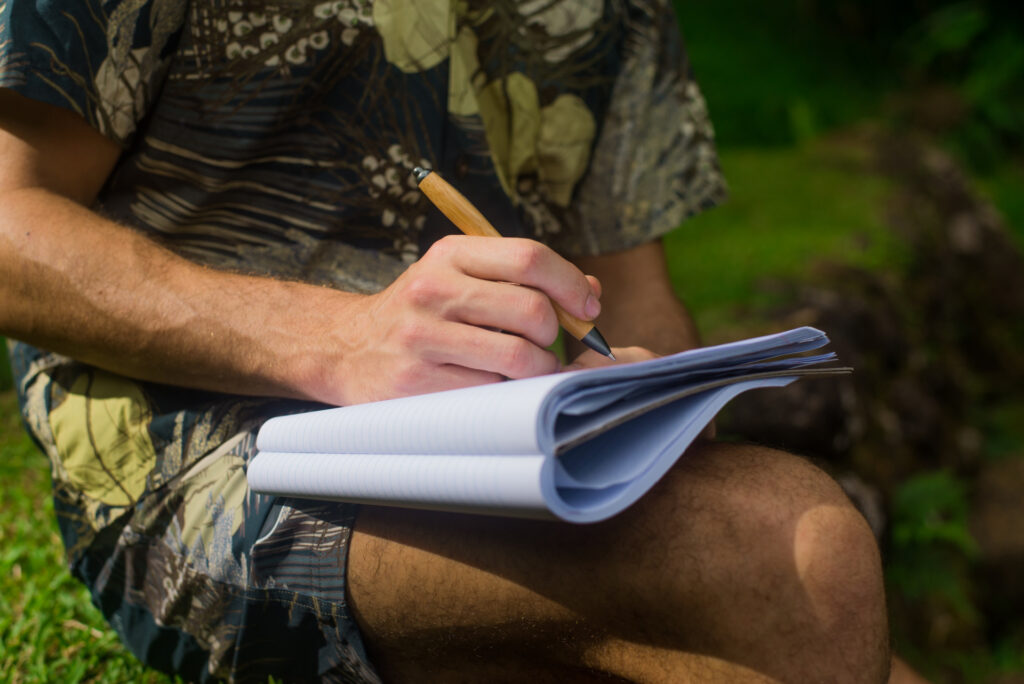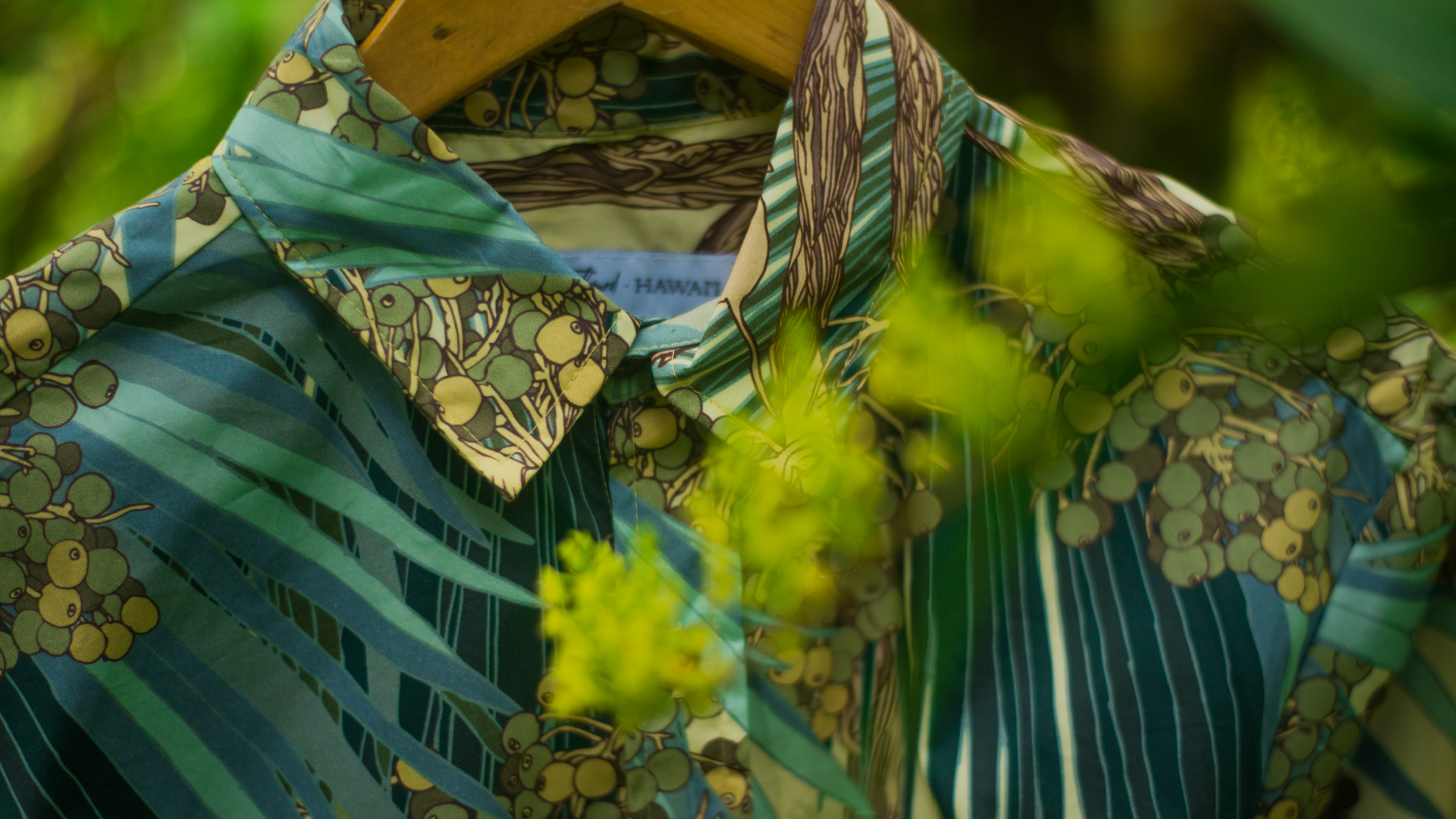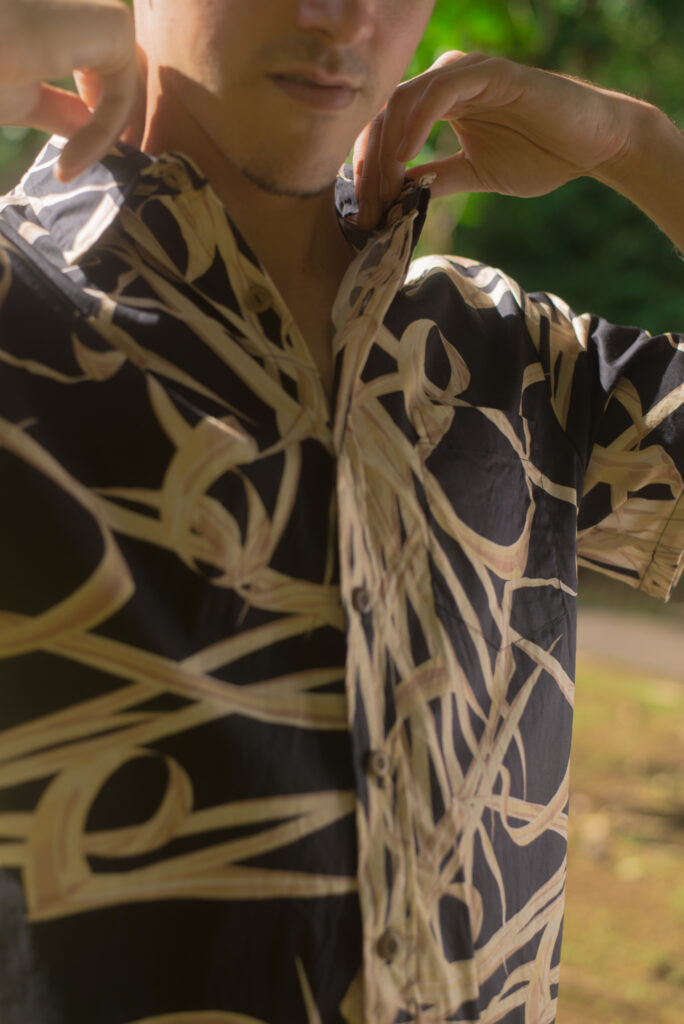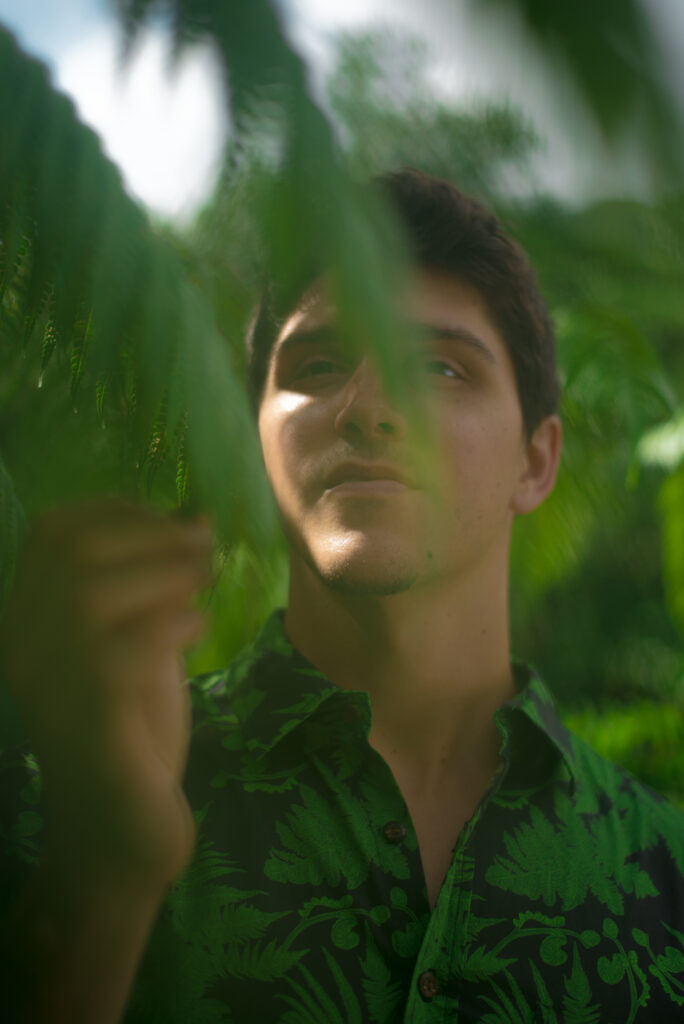Horticulturist-turned-fashion designer David Shepard’s biggest muse remains the natural beauty of the islands.
Words by Eunica Escalante
Images by Vincent Bercasio and Draedon Sayaboc
On the final night of the Merrie Monarch Festival, the decades-old hula competition that transforms Hawai‘i Island’s typically quaint Hilo town into a week-long epicenter of Hawaiian arts and culture, dancers from Hālau Kiawekūpono O Ka Ua took the stage. Like many other hālau hula (hula schools), they were clothed in aloha wear. It’s the style of dress that is the preferred mode du jour of the islands if the colorful outfits adorning the crowd of performers and spectators were anything to go by.
As the hālau danced across the hallowed stage of the Edith Kanaka‘ole Stadium, their movements were accentuated by their vibrant garments, particularly the vivid depictions of Hawaiian flora that decorated their crisp button-down shirts: swaths of prickly leaves in shades of aquamarine punctuated by the bold white blooms of the pua kala, the thorny poppy endemic to the islands’ windswept coastline.
Elsewhere in Hilo, David Shepard watched the performance live on a television screen, in awe at seeing his designs grace the festival stage for the first time. The feat of dressing a Merrie Monarch hālau is a milestone for any Hawai‘i designer. The festival draws in a global audience every year, considered a modern cornerstone of Hawaiian culture.
For Shepard, whose eponymous aloha wear line was a mere idea four years earlier, the event felt like an arrival—a reminder that his work now lived beyond the modest home studio and sketchbooks that first gave them life.
“Watching them…it hit me full force. I just thought, ‘This is the dream.’” he says. “To have it represented there on the stage at Merrie Monarch was just unbelievable.”
Despite his meteoric rise in Hawai‘i’s fashion scene, a younger Shepard had no inklings of becoming a fashion designer. His was an upbringing lived amongst the rural pastures of South Florida, where the exotic flora of the tropics thrived. These plants were his first love. He explored his surroundings to studiously research unique varieties. From the age of 13, he nurtured a garden in his backyard lined with his favorite plants.
The way Hawai‘i cares about the environment and really walks the walk—the whole world needs to learn about it.”
In 2013, he moved to Hawai‘i for graduate school, fascinated by its array of native species. While there, he was confronted with the bleaker side of horticulture, where rare plants teetered on the edge of extinction.
“It wasn’t until I got here that I was like, ‘Oh my gosh, this is next level,’” he says. “The way Hawai‘i cares about the environment and really walks the walk—the whole world needs to learn about it.”
Upon graduating, he landed a position with the National Park Service that placed him on assignment in Kalaupapa. For centuries, the isolated peninsula on the northern tip of Moloka‘i functioned as a Hansen’s Disease colony. Much of its environment remains relatively undisturbed.
Tasked with caring for the community’s nursery of Native Hawaiian plants, he spoke regularly with Kalaupapa’s residents, many former Hansen’s Disease patients. He learned of the stories behind each plant, how in Native Hawaiian culture each species from the smallest fern to the thorniest flower had a meaning.
Inspired, Shepard thought that “if you can get those stories into people’s hearts and homes on a larger scale, then you have a real chance to save [the plants].” But it isn’t enough to get just anybody to pay attention.
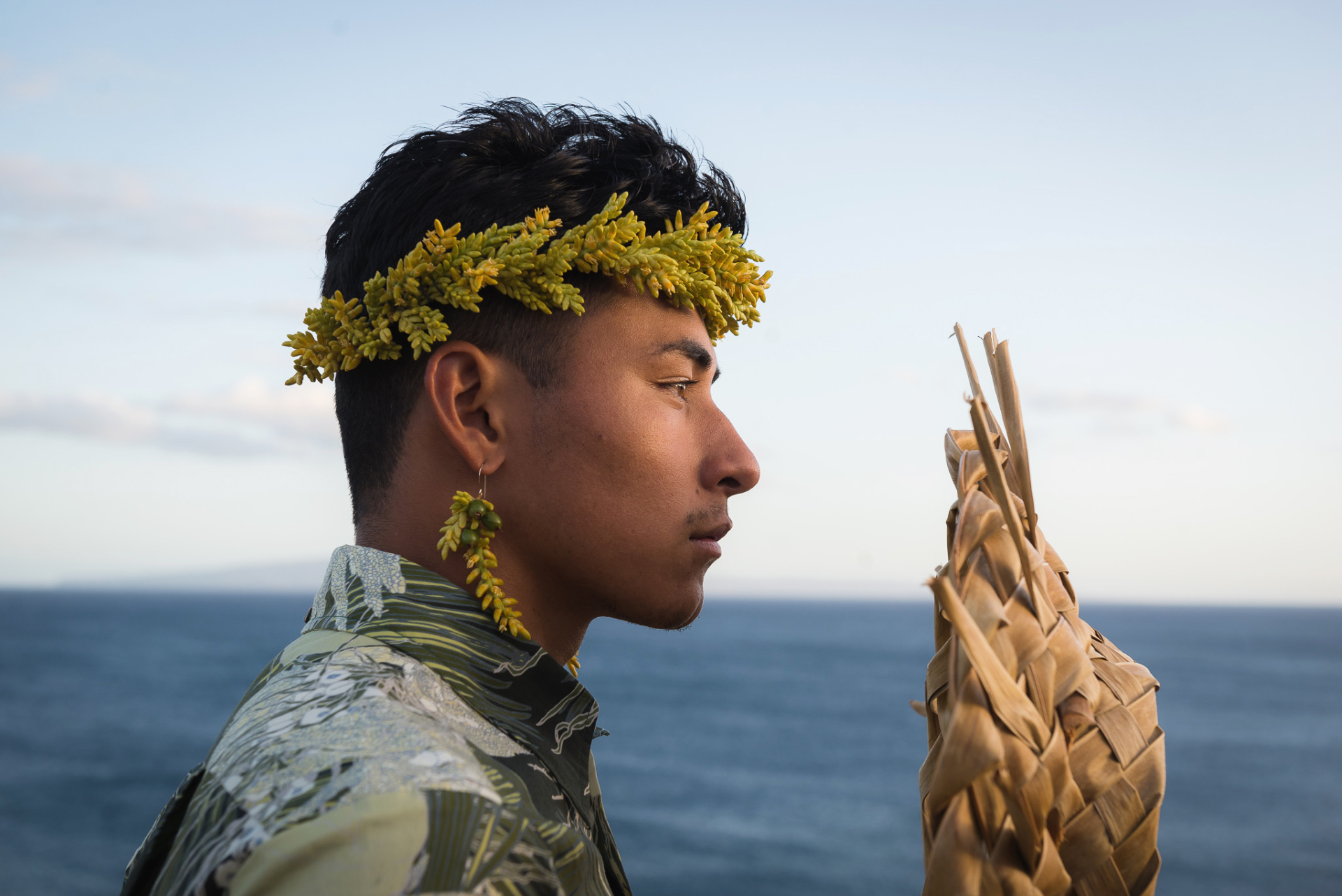
To make a real difference, Shepard understood he had to get these stories in front of the “decision makers… the people that are writing policy.” Politicians, though, are inundated with information. How does one cut through the noise? He knew he alone couldn’t deliver the message. So, he enlisted the politicians themselves to spread the word for him.
He saw an untapped potential in aloha shirts. The colorful button-downs decorated in a medley of floral prints are best known from “Magnum P.I.” Today, aloha shirts are the islands’ unofficial uniform, serving the same function as the conventional business suit.
If Shepard could weave the stories of Hawai‘i’s native plants into the wardrobes of the most influential, then he had a real chance of making them notice.
“My goal is to really create an impact in Hawai‘i for the conservation of these plants, which I’ve devoted my life to,” he says. “I see this as a way for me to bridge the gap, to get those plants in people’s living rooms and their hearts through storytelling.”
My goal is to really create an impact in Hawai‘i for the conservation of these plants, which I’ve devoted my life to.”
Equipped with a background in art, he experimented with patterns featuring Native Hawaiian flora. He cites ukiyo-e or Japanese woodblock prints as an early inspiration.
One can see the comparisons in Shepard’s delicate yet dramatic linework or his penchant for bright color palettes. His debut design was an ode to the Moloka‘i peninsula where his creative seeds were initially planted.
“Inspired by the living tapestry of native Hawaiian plants hugging the coastal jet black lava rock,” he created a pattern of meandering pua kala poppies. Through Shepard’s deft hand, their stark white blooms and silvery green leaves are on lively display as if caught mid-breeze.
Often found growing among lava rocks along the coast, to Shepard they signified the “history of human endurance and compassion in the face of daunting circumstance,” a nod to the Kalaupapa patients who first inspired him. It’s quite a fitting meaning to ascribe to his first design as Shepard’s road to success hasn’t been easy.
As he prepared to launch his line in 2020, the COVID-19 pandemic hit, effectively putting his plans on an indefinite pause. What was meant to be his debut event, the 2020 Merrie Monarch Festival, was canceled and wouldn’t return until a year later.
Perseverance and a shade of luck, though, landed him on the New York Times in a spotlight featuring his line of botanically inspired face masks. Almost instantly, he became a household name. Everyone from politicians to local journalists began sporting a Shepard shirt.
Faithful to his original mission, each one was accompanied by a tag detailing the endangered native plants and animals featured on its print. He began collaborating with local conservation groups, raising donations through his sales. Gradually, his goal of aiding conservation efforts was realized.
Then, in late 2021, another set back.
After months of migraines and sleepless nights, his doctor delivered a brain tumor diagnosis.
By then, Shepard was working on his clothing line full time, supplying eight retail stores across the islands along with his own e-commerce site. For the next six months, he was on the slow path to recovery.
I’m honoring the legacies of what came before me, the kind of community that I love and want to represent in the most authentic way possible.”
Looking back, Shepard sees that time as influential but not defining.
“You know, none of this is about me,” he says, his voice trembling. “I’m honoring the legacies of what came before me, the kind of community that I love and want to represent in the most authentic way possible.”
As his brand grows, Shepard also has authentically helped lift up the LGBTQ community in Hawai‘i, regularly hiring queer talent, including models and photographers, to showcase his designs.
Sentiments of legacy, undoubtedly, ran through his mind on the night of the Merrie Monarch as he saw his designs on stage. Poignantly, it was the same pua kala print that he drew to launch his clothing line except this time they were on the world’s biggest platform for Hawaiian culture.
“I feel myself getting emotional when I say this, but I see myself as just a vehicle for all this to flow through,” he says. “Whatever talents I have, it’s in the service of this purpose that is greater than me.”
Follow David Shepard on Instagram and visit DavidShepardHawaii.com.

